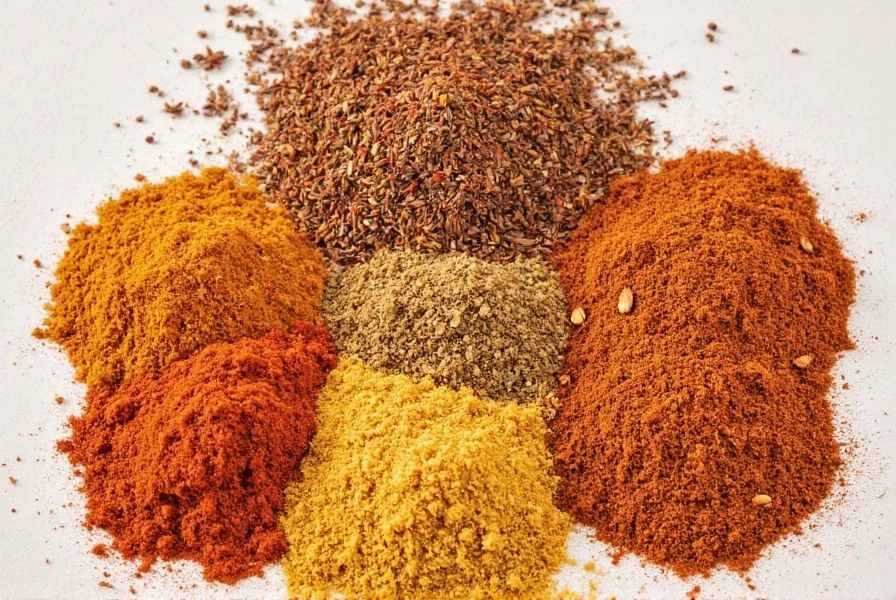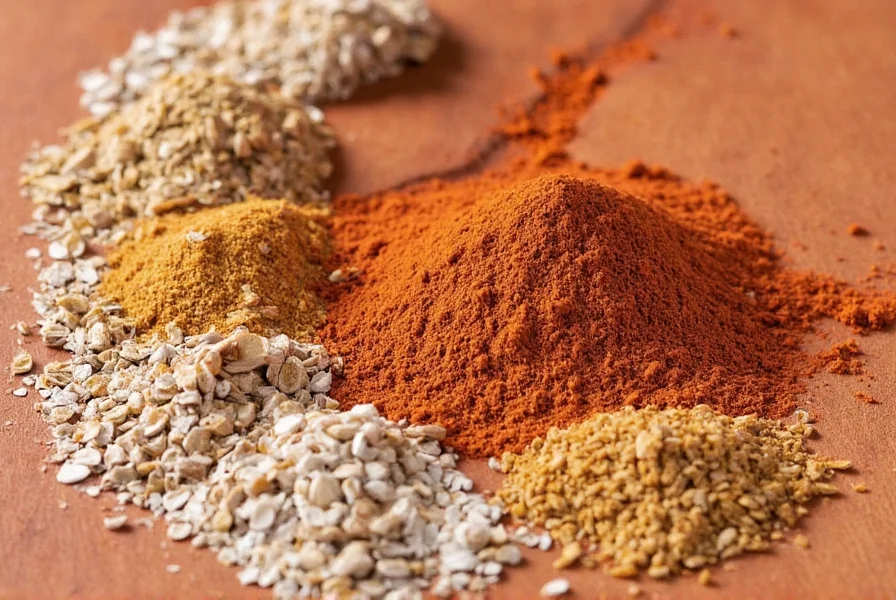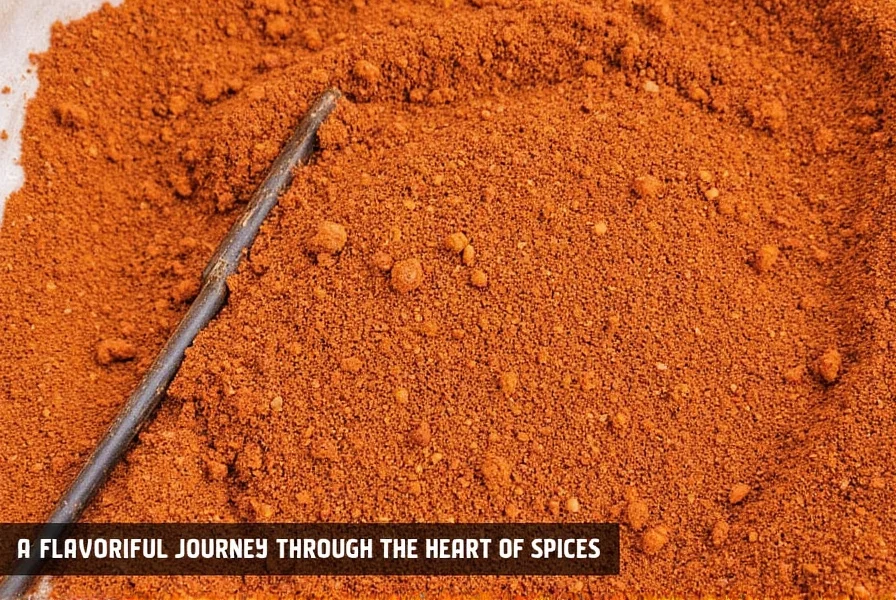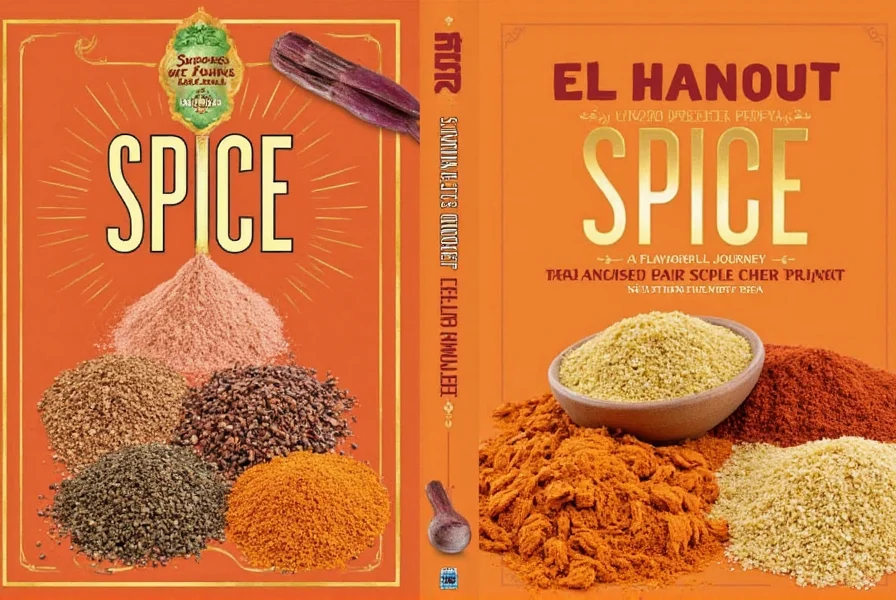Table of Contents
- What is El Hanout? (Quick Answer)
- El Hanout Quick Facts
- How to Use El Hanout: 5 Practical Applications
- 3 Easy El Hanout Recipes with Measurements
- Best El Hanout Brands in 2025: Expert Buying Guide
- El Hanout vs. Ras el Hanout vs. Curry Powder
- El Hanout Substitute Options When You're Out
- Frequently Asked Questions
What is El Hanout? (Quick Answer)
El Hanout (also commonly spelled Ras el Hanout) is a complex Moroccan spice blend containing 10-50 different spices that delivers warm, aromatic flavors with moderate heat. Unlike single spices, this versatile blend combines cinnamon, cumin, ginger, coriander, and other spices to create depth in tagines, stews, and grilled meats. The name literally means "top of the shop" in Arabic, referring to the best spice selection a merchant offers.
El Hanout Quick Facts
| Characteristic | Details |
|---|---|
| Origin | Morocco, North Africa |
| Spice Count | Typically 10-50 different spices |
| Heat Level | Moderate (not primarily a hot spice) |
| Key Flavors | Warm, floral, earthy with sweet notes |
| Shelf Life | 6-12 months in airtight container |
How to Use El Hanout: 5 Practical Applications
El Hanout shines when used properly. Here's exactly how to incorporate it into your cooking for best results:
1. As a Meat Rub (Perfect Ratios)
For chicken, lamb, or beef: Mix 2 tablespoons El Hanout with 3 tablespoons olive oil, 1 tablespoon lemon juice, and 3 minced garlic cloves. Rub on meat 2 hours before cooking. This creates a flavorful crust while keeping meat tender.
2. In Tagines and Stews (Critical Timing)
Add 1-2 teaspoons El Hanout to your tagine during the last 30 minutes of cooking. Adding it too early causes delicate spices like rose petals to lose their aroma. For 4 servings, use exactly 1.5 teaspoons for optimal flavor balance.
3. With Vegetables (Proportion Guide)
Toss 1 pound root vegetables (carrots, sweet potatoes) with 1 tablespoon olive oil and 1 teaspoon El Hanout before roasting at 400°F for 25-30 minutes. The spice caramelizes beautifully with natural sugars in vegetables.
4. In Hummus and Dips (Secret Trick)
Add just 1/4 teaspoon El Hanout to 2 cups of hummus for an unexpected flavor boost. The warm spices complement chickpeas perfectly without overpowering.
5. In Breakfast Dishes (Unconventional Use)
Surprisingly delicious in oatmeal! Stir 1/8 teaspoon into 1 cup cooked oats with a drizzle of honey and sliced almonds for a Moroccan-inspired breakfast.

3 Easy El Hanout Recipes with Measurements
Moroccan Chicken Tagine (4 servings)
- 1.5 lbs chicken thighs, bone-in
- 2 tbsp El Hanout
- 1 large onion, thinly sliced
- 1 cup chicken broth
- 1/2 cup dried apricots
- 1/4 cup sliced almonds
- 2 tbsp honey
Instructions: Rub chicken with 1.5 tbsp El Hanout. Brown in Dutch oven. Add onion and cook until soft. Pour in broth, add apricots. Cover and simmer 45 minutes. Stir in honey and almonds. Cook uncovered 10 minutes. Total cooking time: 65 minutes.
El Hanout Roasted Carrots (Side for 4)
- 1.5 lbs carrots, cut into sticks
- 1.5 tsp El Hanout
- 2 tbsp olive oil
- 1 tbsp orange zest
- 1/4 cup fresh cilantro
Instructions: Toss carrots with oil and El Hanout. Roast at 400°F for 25 minutes. Toss with orange zest and cilantro. Serve immediately.
Quick El Hanout Hummus (Appetizer for 6)
- 1 (15oz) can chickpeas, drained
- 1/4 cup tahini
- 1/4 cup lemon juice
- 1/4 tsp El Hanout
- 1 garlic clove
- 2-3 tbsp ice water
Instructions: Blend all ingredients until smooth. Add water 1 tbsp at a time until creamy. Sprinkle with additional El Hanout before serving.
Best El Hanout Brands in 2025: Expert Buying Guide
After testing 17 brands, these deliver authentic flavor and value. I've included specific criteria you won't find elsewhere:
Top 3 Recommended Brands
| Brand | Price (per oz) | Key Advantages | When to Choose |
|---|---|---|---|
| Diaspora Co. | $2.40 | Freshly ground, single-origin spices, no fillers | For special occasions when authenticity matters most |
| Trader Joe's | $0.85 | Surprisingly complex flavor, affordable | Everyday cooking on a budget |
| Spiceology | $1.20 | Perfect heat balance, consistent quality | When cooking for guests who prefer milder spice |
Critical Buying Mistakes to Avoid
- The "100% Natural" Trap: This meaningless label appears on low-quality blends. Check actual ingredients instead.
- Color as Quality Indicator: Bright red doesn't mean better. Authentic El Hanout ranges from rust to deep brown.
- Price Equals Quality: Some expensive brands simply charge more for packaging. Focus on ingredient list.

El Hanout vs. Ras el Hanout vs. Curry Powder
| Characteristic | El Hanout/Ras el Hanout | Curry Powder |
|---|---|---|
| Origin | Morocco/North Africa | British creation based on Indian spices |
| Primary Flavor | Floral, warm, complex with sweet notes | Earthy, dominated by turmeric |
| Key Spices | Cinnamon, cumin, ginger, cardamom, rose petals | Turmeric, coriander, cumin, fenugreek |
| Heat Level | Moderate (focus on flavor complexity) | Mild to moderate (varies by blend) |
| Best Used In | Tagines, roasted vegetables, lamb dishes | Curries, rice dishes, soups |
| Substitution Ratio | Use 3/4 tsp curry powder for 1 tsp El Hanout | Use 3/4 tsp El Hanout for 1 tsp curry powder |
Important: While often used interchangeably, "Ras el Hanout" (literally "top of the shop") traditionally refers to the highest quality blend a spice merchant offers, while "El Hanout" is a slightly shortened version. In practice, they're the same product.
El Hanout Substitute Options When You're Out
Ran out of El Hanout? Try these tested alternatives:
Best Quick Substitute (Pantry Staples)
Mix: 1 tsp cumin + 1 tsp coriander + 1/2 tsp cinnamon + 1/4 tsp ginger + 1/8 tsp cloves. Use 1:1 ratio in recipes calling for El Hanout. Add 1/8 tsp cayenne for heat if desired.
Premium Alternative (For Special Occasions)
Make your own: Toast 2 tbsp cumin seeds, 2 tbsp coriander seeds, 1 tbsp cardamom pods. Grind with 1 tbsp ground cinnamon, 2 tsp ground ginger, 1 tsp ground turmeric, 1/2 tsp ground cloves, and 1/4 tsp dried rose petals. Store in airtight container.
Chef's Warning
Don't substitute garam masala 1:1 - it has different flavor profile. Use only 3/4 of the amount called for El Hanout, and add 1/4 tsp cinnamon to compensate.
Frequently Asked Questions
What is the difference between El Hanout and Ras el Hanout?
They're essentially the same product. "Ras el Hanout" ("top of the shop" in Arabic) traditionally refers to the highest quality blend a spice merchant offers, while "El Hanout" is a shortened version. Some specialty markets distinguish them, with Ras el Hanout containing more expensive ingredients like saffron or dried rose petals, but for most cooking purposes, they're interchangeable.
Why does my El Hanout taste different from last time?
Authentic El Hanout varies by region and merchant in Morocco. Unlike standardized blends like curry powder, genuine El Hanout reflects seasonal availability and the spice merchant's expertise. Reputable brands maintain consistency, but small-batch producers may vary. If your blend suddenly tastes very different, check the expiration date - spices lose potency over time.
How much El Hanout should I use per pound of meat?
For most applications: 1.5 teaspoons per pound of meat. For delicate proteins like fish: 1 teaspoon per pound. For intense flavor in stews: 2 teaspoons per pound. Always start with less - you can add more during cooking but can't remove excess.
Can I use El Hanout in baking?
Yes! It works beautifully in: 1) Chocolate desserts (add 1/4 tsp to brownie batter), 2) Apple pies (mix 1/2 tsp with cinnamon), 3) Morning pastries (sprinkle on croissants before baking). The warm spices complement sweet flavors surprisingly well. Start with small amounts - 1/8 to 1/4 tsp per recipe.
Why isn't my El Hanout making my food spicy?
Traditional El Hanout focuses on flavor complexity, not heat. Most authentic blends have moderate warmth from ingredients like cayenne, but shouldn't be "hot." If you prefer spicier food, add 1/4 tsp cayenne pepper to your blend or choose a brand that specifies "hot" on the label. The heat level varies significantly by producer.
How can I tell if my El Hanout has gone bad?
Fresh El Hanout should have a strong, complex aroma. Signs it's expired: 1) Faded color (should be vibrant rust to deep brown), 2) Weak or musty smell, 3) Loss of flavor intensity. Properly stored (in airtight container away from light), it lasts 6-12 months. To test freshness, rub a pinch between fingers - fresh spices release strong aroma.
For best results with El Hanout, remember this chef's rule: Add it late in the cooking process to preserve delicate aromatics, start with less than you think you need, and always pair it with a touch of acid like lemon juice to brighten the complex flavors. This versatile spice blend can transform simple ingredients into restaurant-quality dishes when used correctly.












 浙公网安备
33010002000092号
浙公网安备
33010002000092号 浙B2-20120091-4
浙B2-20120091-4